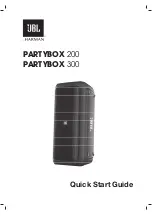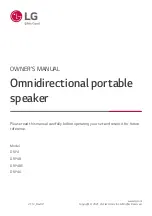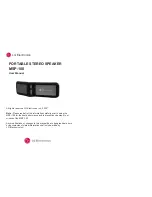
- 11 -
9) and the load’s plug is disconnected.
WARNING! If in doubt, contact an authorised assistance centre.
WARNING! Contact an authorised assistance centre for any operations
not included below.
Cleaning after every use
Take care of your machine and clean it regularly to ensure that it
remains perfectly efficient and has a long lifetime.
Clean the machine using a soft brush or cloth.
Do not spray or soak the machine with water.
Do not use inflammable substances, detergents or solvents as these
may damage the machine beyond repair. The plastic parts are prone
to damage by chemical agents.
Replacing the motor oil
Check the oil level before each start and top up if necessary.
Replace the oil after the first month or after the first 20 hours of use.
Then replace it every 6 months or after every 80 hours of use.
See the previous chapters.
Spark plug
Check it after every 50 hours of use, and replace it if necessary.
See the technical data in reference to the spark plug type.
1. Remove the pipette and unscrew the spark plug using the relative
spanner.
2. Examine the spark plug and remove any carbon residue with a
metal brush. Replace the spark plug if the electrode is excessively
worn or the insulation is damaged.
3. Measure the distance between the electrodes: it should be betwe-
en 0.7 and 0.8 mm (Fig. F1).
4. Screw the spark plug back in by hand.
5. Secure a used spark plug with around ¼ turn of the spanner, and
a new one with around ½ turn of the spanner.
Air filter
Clean it after every 50 hours of use, and replace it if necessary.
If used in dusty environments, clean more frequently.
1. Open the cover of the filter box (Fig. A pos. 14).
2. Remove the sponge.
3. Wash it with soap and water and rinse completely.
4. Leave it to dry.
5. Immerse the sponge in clean motor oil.
6. Squeeze it to remove excess oil. If there is too much oil left in the
sponge, the motor could smoke.
7. Place the cover of the box and the relative seal back into position.
Fuel pipes
Periodically make sure that there are no craps in the fuel pipe and
that the joints are solid.
Make sure that there are no fuel leaks.
Replace if necessary; go to an authorized service center.
Petrol cock and fuel filters
Clean every 6 months or 100 hours of use.
1. Close the petrol cock (Fig. A pos. 15 and Fig. E1).
2. Using a spanner, unscrew the cup on the lower part of the petrol
cock.
3. Clean the cup using a non-flammable solvent.
4. Reassemble the cup, taking care with the seal. Replace if damaged.
5. Try to open the cock (Fig. E pos. 1) to check that there are no leaks.
Parts inside the motor, muffler, valves, combustion chamber, etc.
Every 300 hours of use, have these parts checked at an authorised
assistance centre.
Alternator maintenance
Every 300 hours, have an authorised assistance centre check the
internal cleanness and the condition of the brushes of the inductor.
MOVING THE GENERATOR
WARNING! Before moving the generator, turn off the motor (Fig.
A pos. 4) and close the petrol cock. (Fig. E1)
WARNING! Risk of burning. Some parts could remain hot long after
the motor is turned off.
STORAGE
IMPORTANT! Hot surfaces. Some parts of the machine may stay
hot for several hours after it has been switched off. Wait for it to
cool down completely before storing it.
IMPORTANT! Make sure that the storage environment is not damp
and/or dusty.
1. Remove all the fuel from the tank.
2. Empty the carburettor tray using the drain screw present on the
bottom of the same (Fig. F2).
3. Replace the motor oil.
4. Pour a few drops of motor oil into the spark plug hole and put the
motor in the compression position.
TROUBLESHOOTING AND PERMITTED OPERATIONS
The motor does not start
- The motor’s start switch (Fig. A pos. 4) is on ”STOP”.
- There is no petrol in the tank: fill it up.
- The petrol cock (Fig. E1) is closed: open it.
- The filter of the petrol cock is dirty: clean it (see maintenance
instructions).
- The petrol pipes are blocked: clean them.
- There is dirt or water in the carburettor tray: clean it (contact an
authorised service center).
- The spark plug does not spark, is dirty or worn: clean or replace it.
- The new spark plug does not spark: contact an authorised service
centre.
- Motor oil level low: replenish it (see paragraph entitled “motor oil
check and topping up).
- Other: contact an authorised service centre.
The motor starts and then stops
- Insufficient oil: replenish it (see paragraph entitled “motor oil check
and topping up).
- The petrol cap bleed valve is blocked: clean it.
- Dirt in the fuel supply system: clean it.
- Excessive electric load: reduce the load.
- Other: contact an authorised service centre.
The generator does not supply current.
- The power switch on the generator is on “OFF”: move it to “ON”.
- The power switch on the generator moved to “OFF”: the trip switch
against overload intervened. Reduce the applied load.
- The power switch on the generator moved to “OFF”: The trip switch
against overload intervened. Check for short circuits or faults with
the connected appliance.
- The generator’s brushes are worn: replace them (contact an au-
thorised service centre).
- Other: contact an authorised service centre.
IMPORTANT! If the machine still fails to function correctly after you
have carried out the above operations, or in the event of anomalies
other than those described above, take the lawnmower to an autho-
rised service centre. Always provide the machine model and serial
number shown on the technical data label and the enclosed sheet.
DEMOLITION
In order to protect the environment, proceed according to the local
laws in force.
IMPORTANT! Before demolishing the machine, drain the fuel tank
completely and drain the motor oil, handing it over to a used oil
collection centre.
Do not throw the packaging away. Take it to a recycling centre instead.
When the machine is no longer usable or reparable, dismantle the
various parts for differentiated refuse collection. All the plastic com-
ponents bear an acronym identifying the materials they are made
from. This can be used when recycling them in the future.
Dead batteries must be sent to an authorised disposal centre.






























